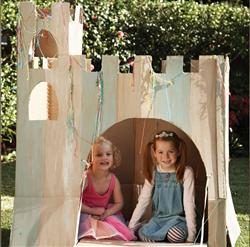Helping Kids Make Sense of Money!
By Guest Blogger Lisa Witherspoon
“I want THAT, Mom. Pleeeeease!!!” This is probably something you have heard many times if you have dared to walk through Target or Wal-Mart with your children in tow. As adults, we know that children can’t have everything they think they want, especially in the current economic time. However, this can be difficult to explain since most children have very little understanding of money and how it works.
Money management, though, is skill that everyone needs throughout their life. According to the FDIC, you should begin discussing money with children as young as three! Even if your kids are older, it is never too late to begin so here are some tips:
- Introduce the concept of money – Beginning in elementary school, children begin to learn the value of coins, but the overall concept of how much things cost is harder to grasp. For example, young children might think that a car or a house costs $100 because, to them, that is a lot of money. They also need to have a basic understanding of how money works. Once, my daughter asked if she could have a horse. When I explained that a horse was very expensive, her response was, “Well just go get some money out of that machine you put your card into!” Obviously, she didn’t quite understand how money works! They need to know that those little plastic cards (debit AND credit) are, sadly, NOT magical!!!
- Help kids understand marketing/advertising – Have you ever seen a toy commercial with unhappy kids??? Or a cereal commercial where kids say, “Yuck!”? Of course not! The purpose of advertising is to make products appealing. It is up to consumers to figure out how much of that advertising is truthful. Work with kids to ask and answer questions like these: Is that food healthy? Is the item really useful? How/when/where would it be used or played with? Are there any other associated costs (like all the food and tack equipment my daughter’s horse would have needed)?
- Give your child an allowance – Giving your child an allowance makes him/her responsible for their own money and for the decisions they make with that money. You should give them guidance, but ultimately they get to decide how to use the money that belongs to them.
- Teach kids to save and give – Several times, I have seen the suggestion that kids get three “banks” for their money – one for spending money, one for saving money, and one for donating money. It is up to the parents and the child to decide how to divide it up. The main point is to help kids learn that spending it is NOT the only option. Eventually, they can even go to the bank, open a savings account, and begin to learn how their money can grow with interest. This also encourages long-range planning, a very important money skill.
- Let kids earn money – Especially if children want money for a certain toy or event, give them the opportunity to earn extra cash by doing extra chores, a lemonade stand, or helping a neighbor. This teaches them that money doesn’t just appear – it comes after hard work. It also reinforces the concept of setting a goal and working toward it. Once they have worked hard to earn the money, you may find they are more careful with how they spend it!
- Allow mistakes – We’ve all made that impulse buy or gotten that overpriced item we just had to have. Give kids the space to make the same type of mistakes on a small scale. They will learn some valuable lessons!
- Set a good example – That impulse buy I mentioned . . well, kids learn so much from what they see. If you demonstrate self-control and responsible money decisions, your children will hopefully learn those same behaviors!
**Information for this article was gathered from http://www.kidmoney.about.com/; http://www.childparenting.about.com/;http://www.pueblo.gsa.gov/.







